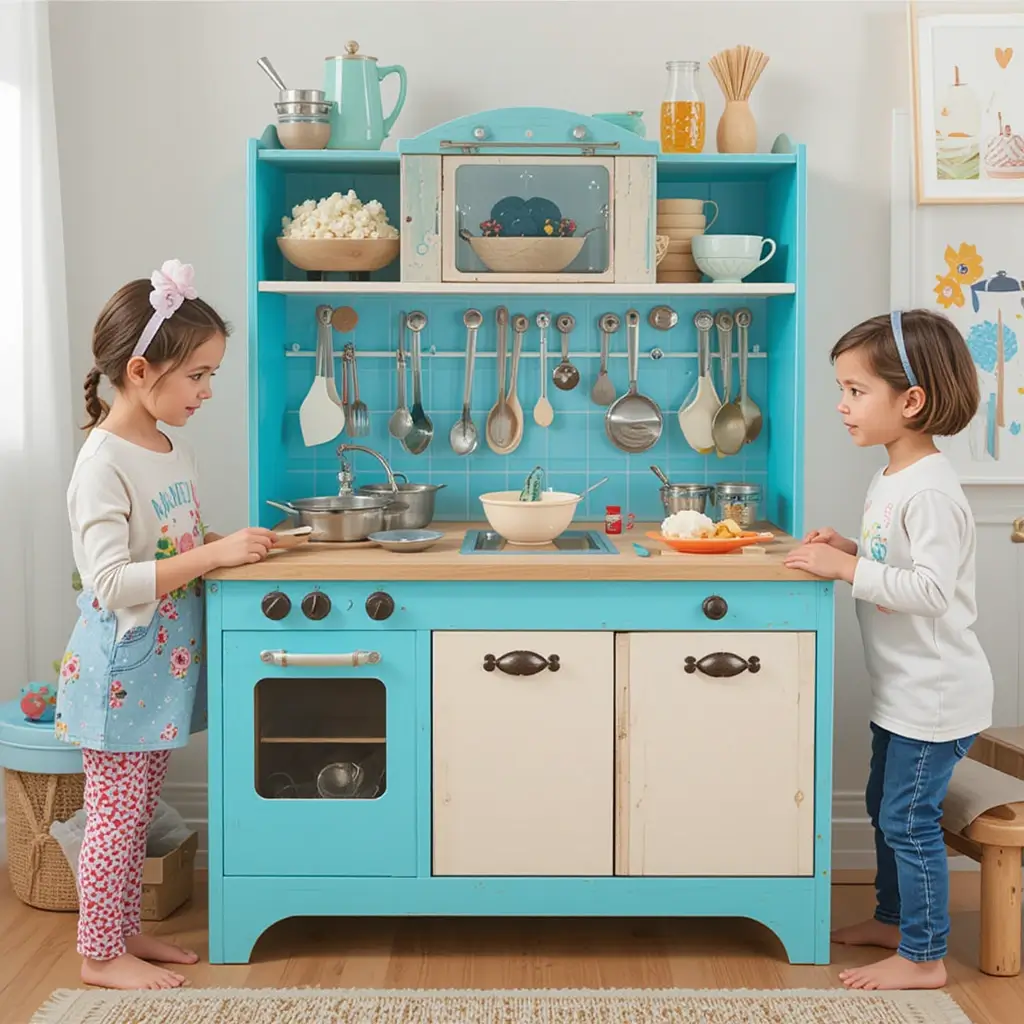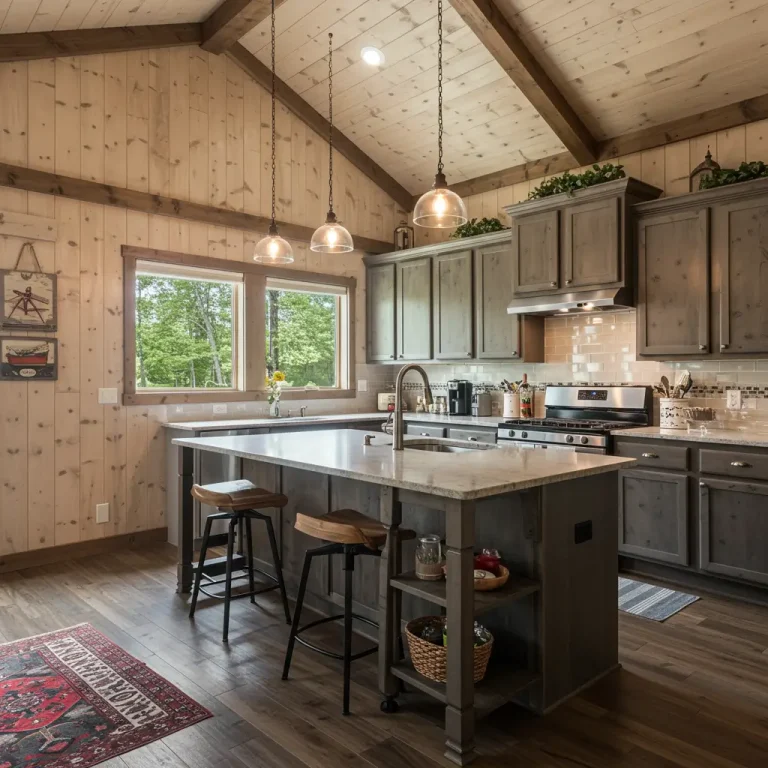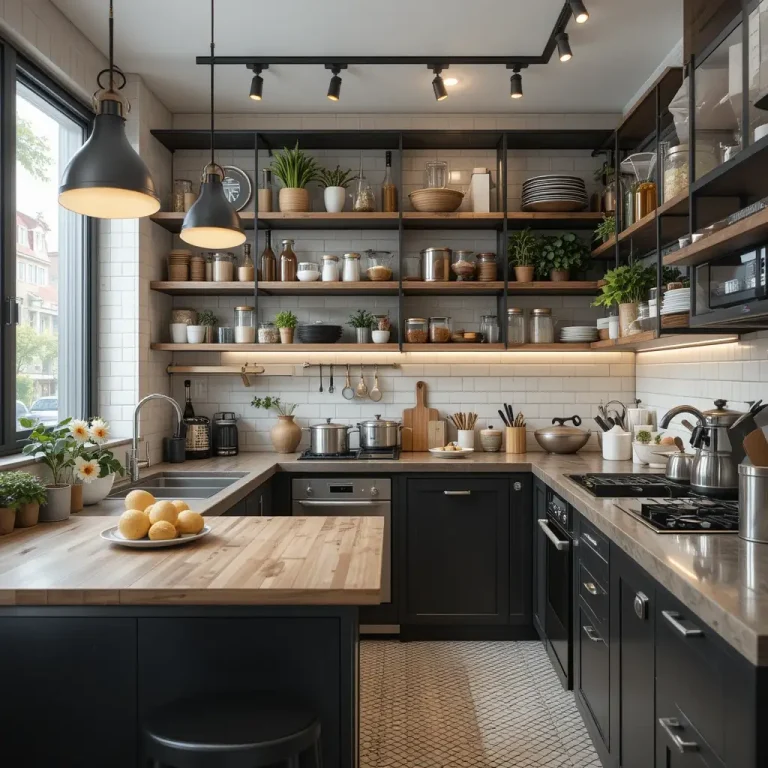25 Learning Kitchen Ideas for Kids to Explore Food
Looking for creative ways to spark your child’s curiosity about food? These 25 learning kitchen ideas for Kids that are designed to turn cooking into a fun, hands-on adventure. Whether you’ve got a toddler or a curious tween, these playful setups and activities will teach essential kitchen skills while encouraging healthy habits and sensory exploration.
1. Create a Mini Chef Station
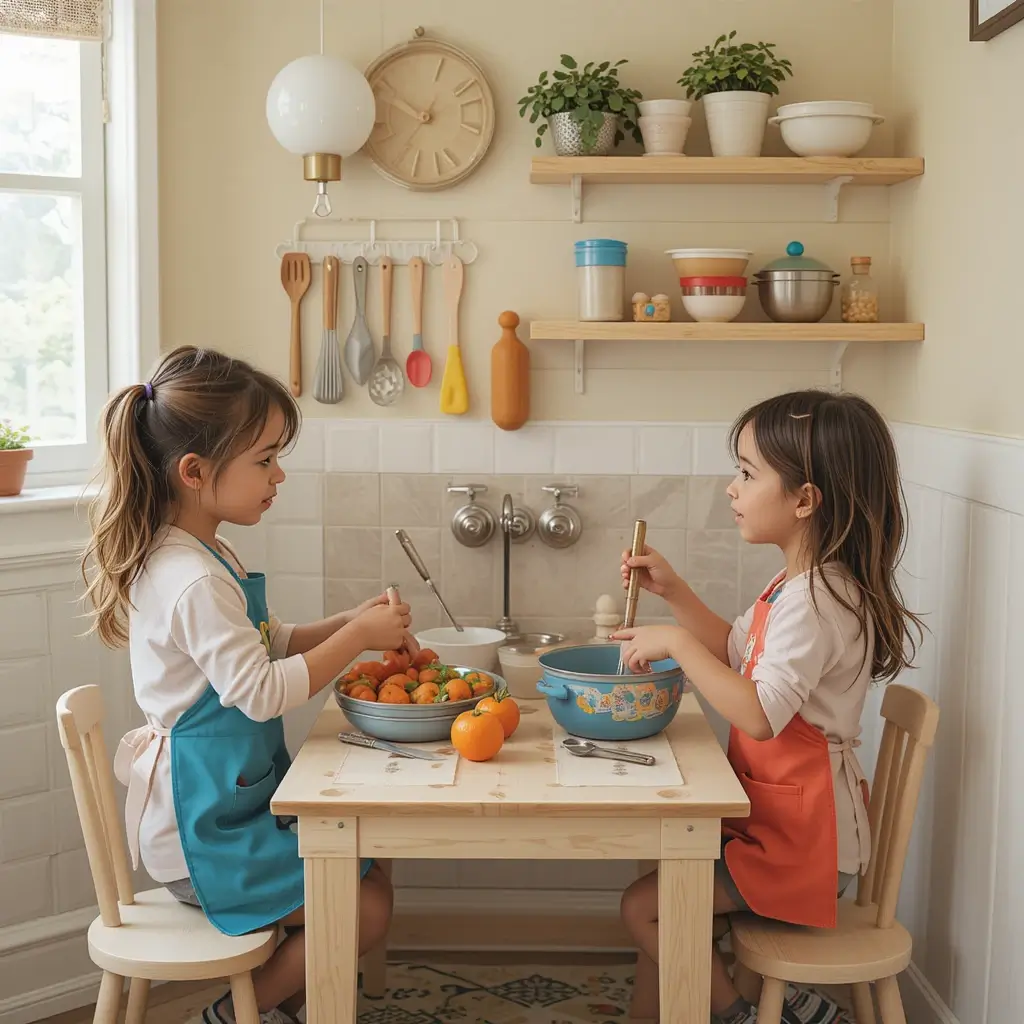
Set up a kid-friendly corner in your kitchen with a low table, mixing bowls, and utensils. This designated space helps kids feel included and encourages independence. Equip it with plastic knives, measuring cups, and aprons to foster responsibility while they explore the joy of preparing meals safely and confidently.
2. DIY Pizza Night
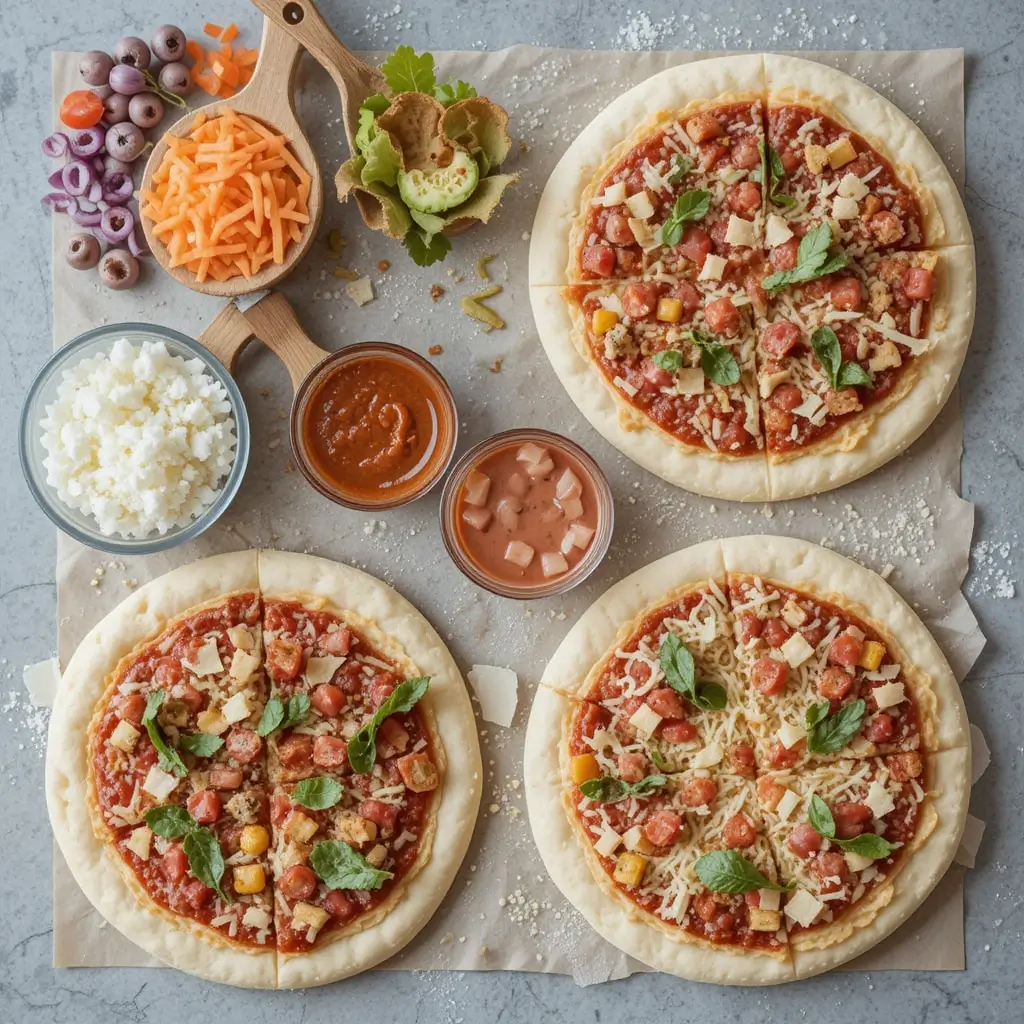
Let kids take the lead with pizza night. Provide dough, sauce, cheese, and various toppings in small bowls. Encourage them to build their own pizzas, learning about food combinations, textures, and cooking time. It’s a tasty way to teach kitchen prep and promote creativity through food play.
3. Color Sorting with Vegetables
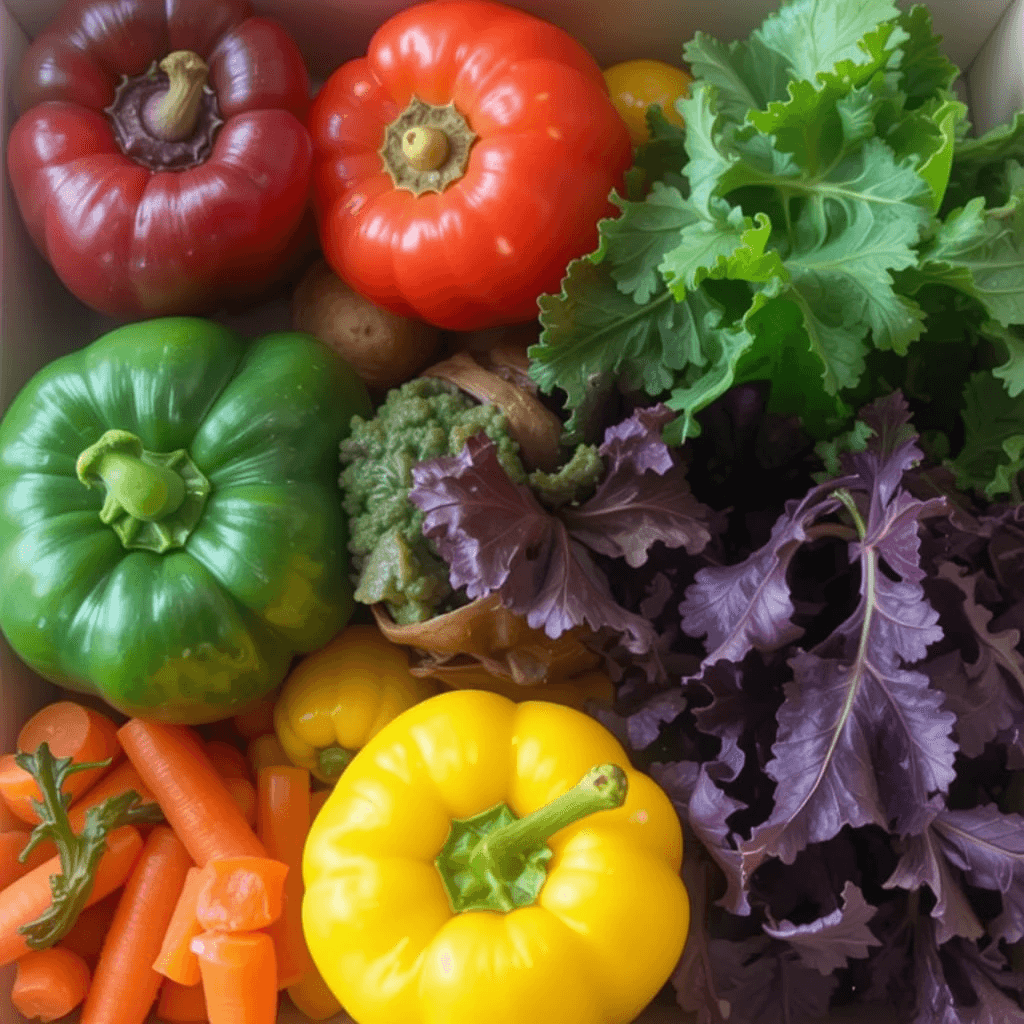
Introduce colors through food by asking kids to sort vegetables by shade. Use bell peppers, carrots, and leafy greens for a vibrant display. This fun activity enhances color recognition, encourages trying new vegetables, and teaches basic sorting—an early math concept—through hands-on engagement in the kitchen environment.
4. Fruit Skewer Creations
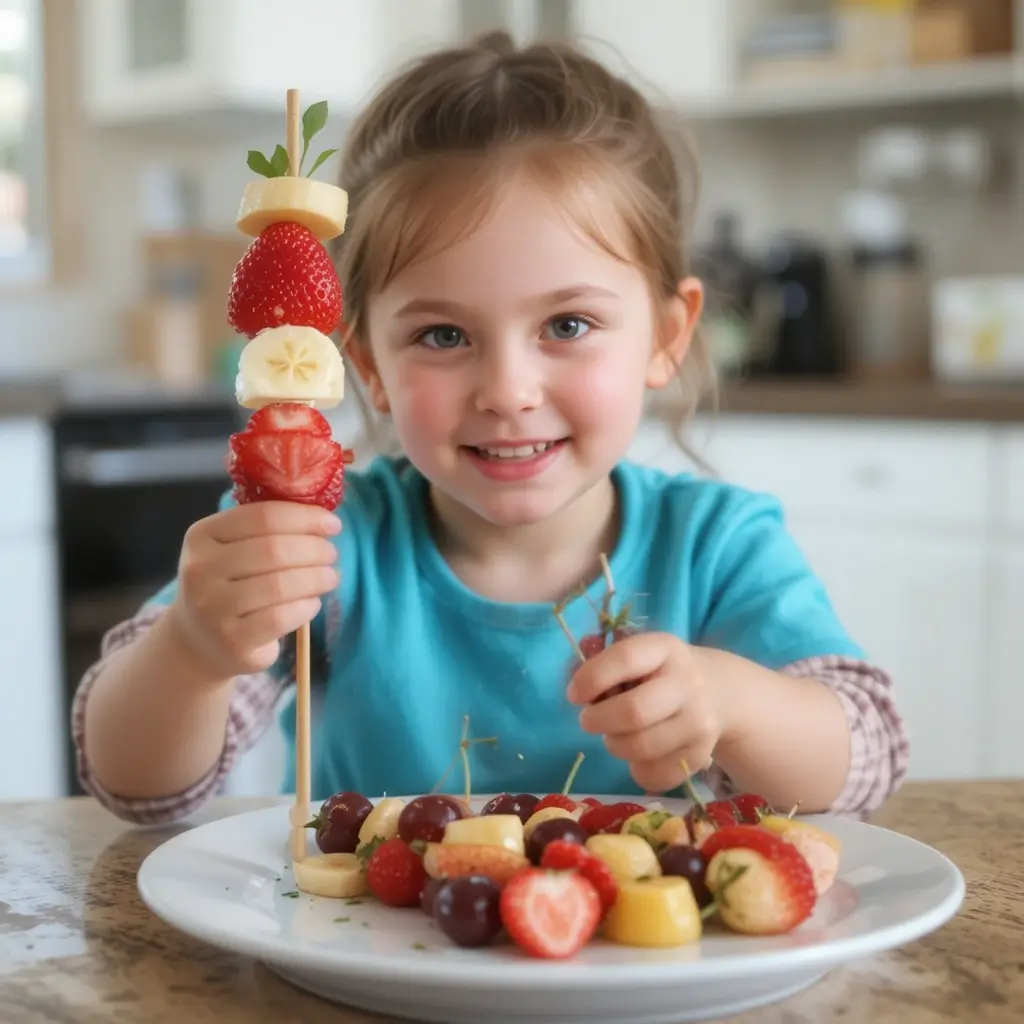
Hand kids skewers and a variety of cut-up fruits like strawberries, bananas, and grapes. Let them create their own patterns while learning about colors, textures, and safe food handling. This tasty project promotes fine motor skills, decision-making, and nutrition awareness in a fun and safe way.
5. Muffin Tin Taste Tests
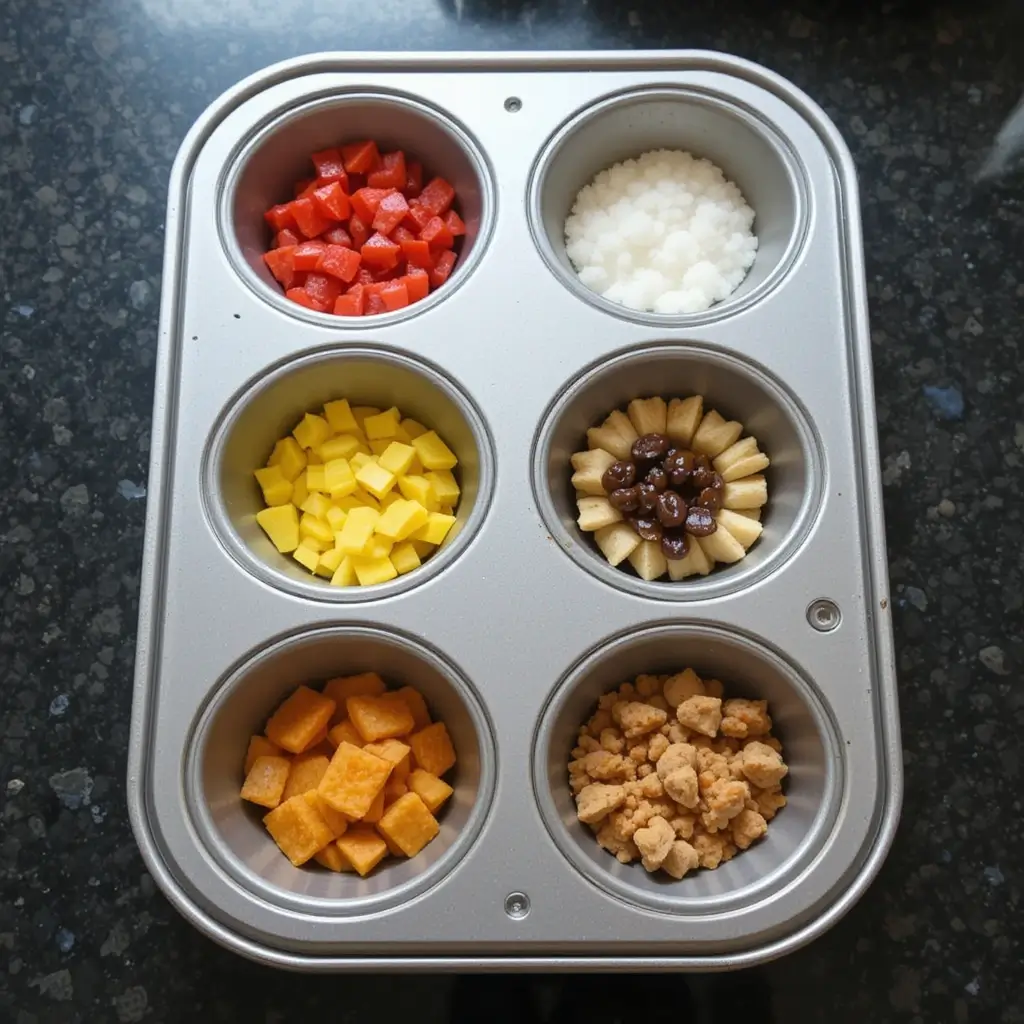
Use a muffin tin to serve a sampling of sweet, sour, salty, and bitter foods. Let kids taste and describe each one. This activity builds vocabulary, sensory awareness, and encourages adventurous eating. It’s also a great conversation starter about flavors and how our taste buds work.
6. Make Your Own Trail Mix
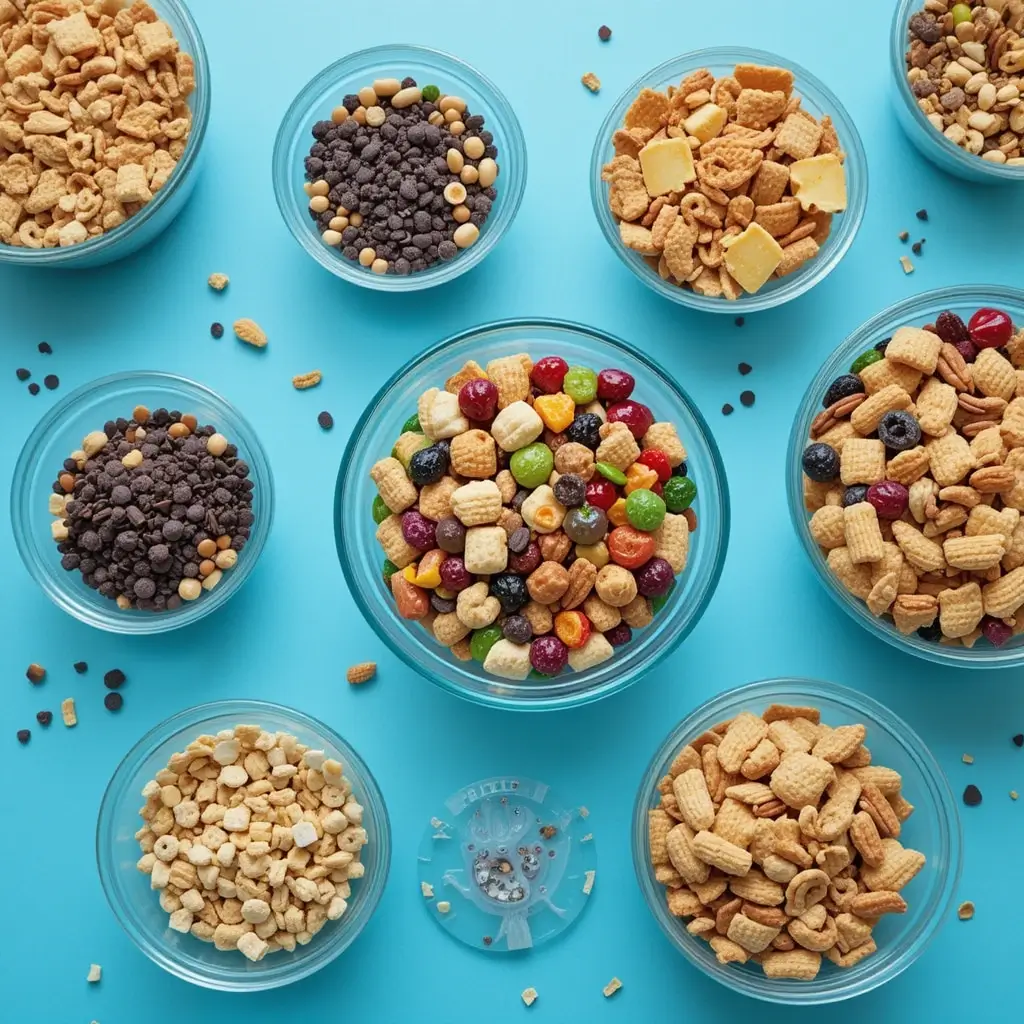
Set up bowls of nuts, seeds, cereal, dried fruit, and chocolate chips. Let kids mix their own trail mix, learning about portion sizes, textures, and healthy snacks. It’s a perfect combination of food education, motor skill practice, and decision-making, all wrapped in a delicious and portable treat.
7. Cook with Alphabet Pasta
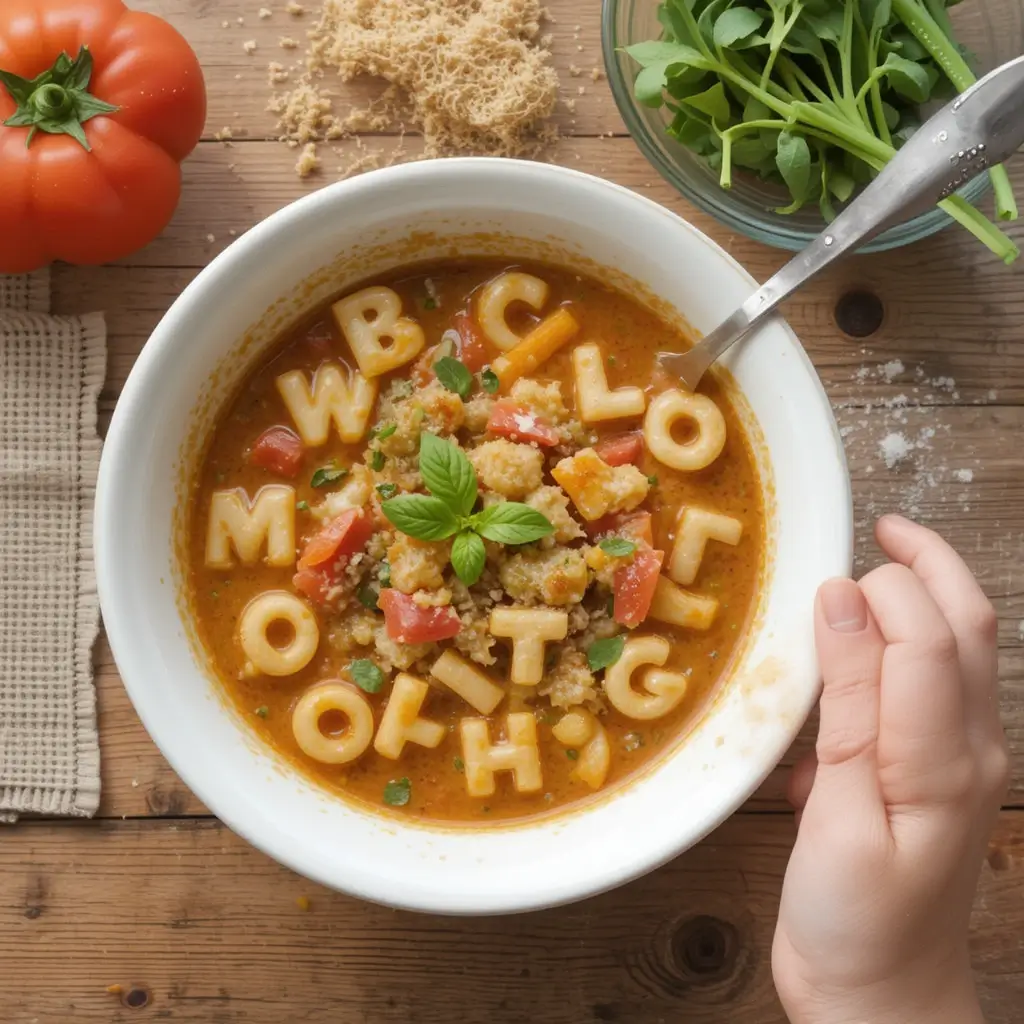
Use alphabet-shaped pasta in soups or salads to sneak in a little spelling practice. Ask kids to find letters and form words before eating. It’s a fun way to combine literacy and food exploration, making mealtime both educational and interactive without losing the excitement of eating something yummy.
8. Washing Produce Together
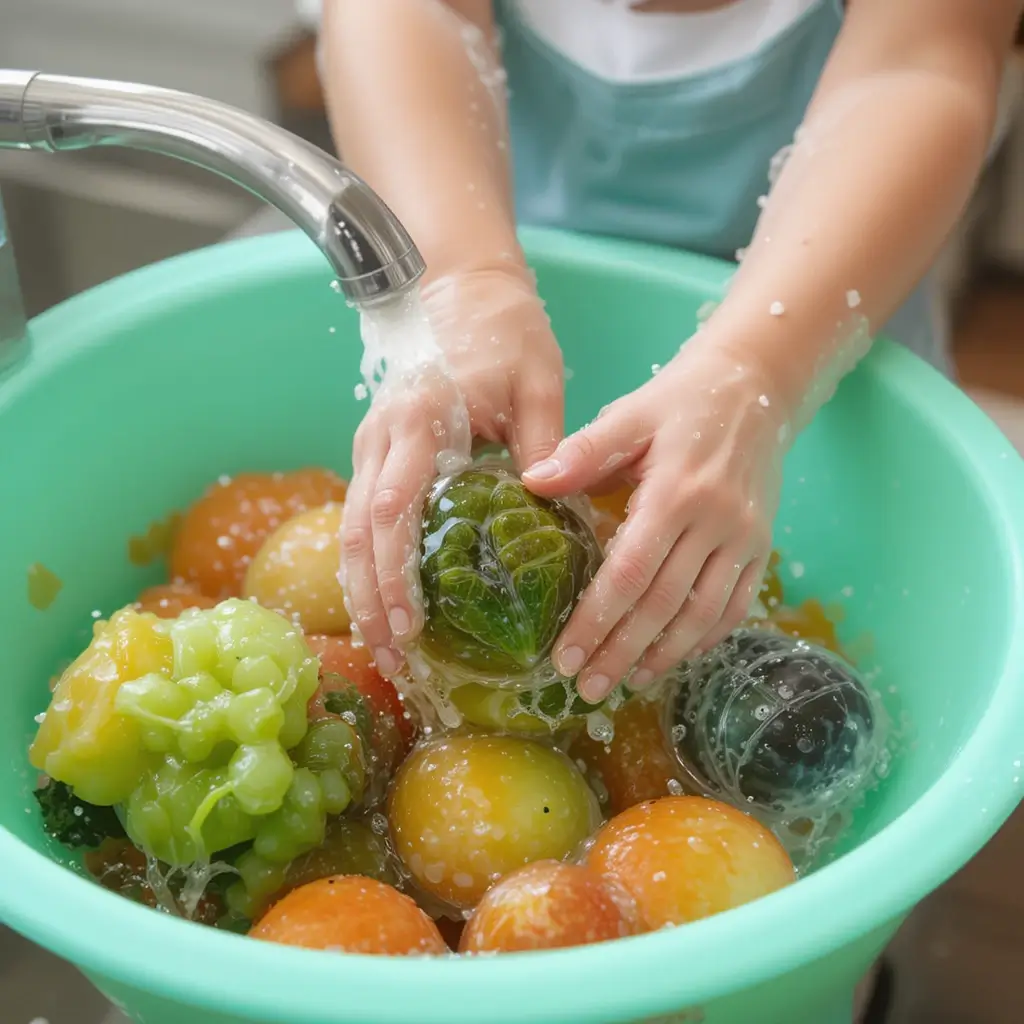
Teach proper food hygiene by involving your kids in washing fruits and vegetables. Show them how to scrub, rinse, and dry different types of produce. This not only instills good habits but also offers a sensory experience with textures and water play that’s both practical and enjoyable.
9. Make Rainbow Smoothies
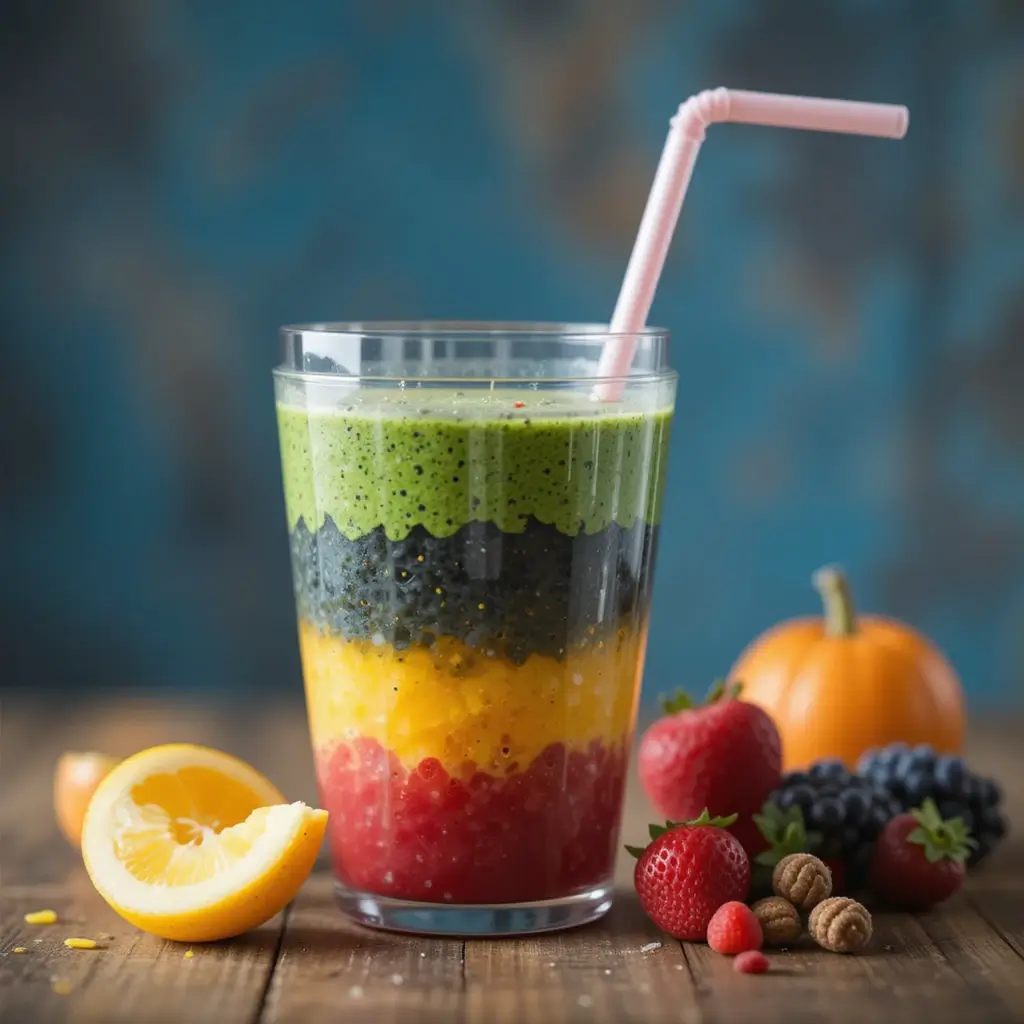
Let kids help choose and layer different colored fruits into a clear cup or blender to make a rainbow smoothie. Talk about the nutrients in each color. This activity teaches health awareness, creativity, and the science of blending while producing a colorful, tasty drink they’ll be proud to enjoy.
10. Edible Science Experiments
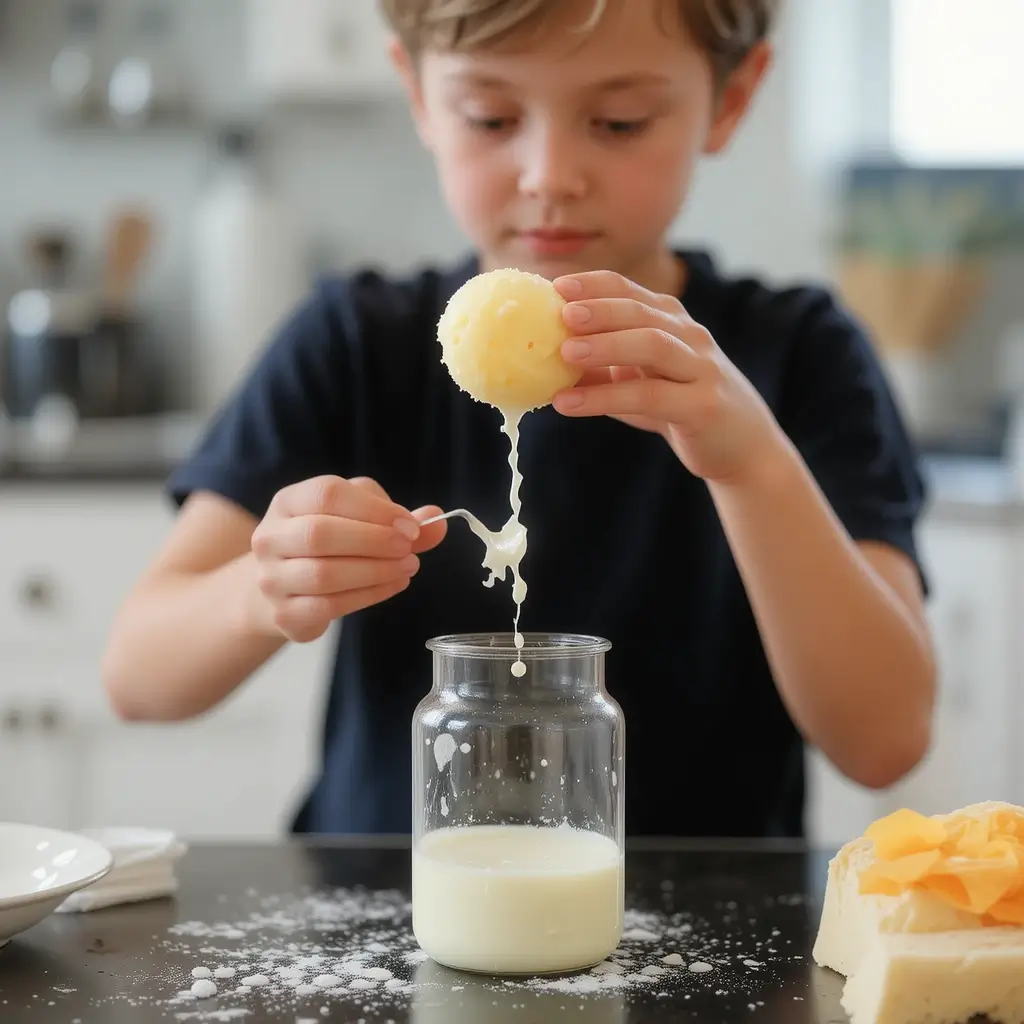
Do simple food-based science experiments like making butter from cream or watching bread rise with yeast. These activities spark curiosity and demonstrate real-life chemistry in action. Plus, kids love the surprise factor of seeing food change states—especially when they get to eat the results afterward.
11. Cookie Cutter Sandwiches
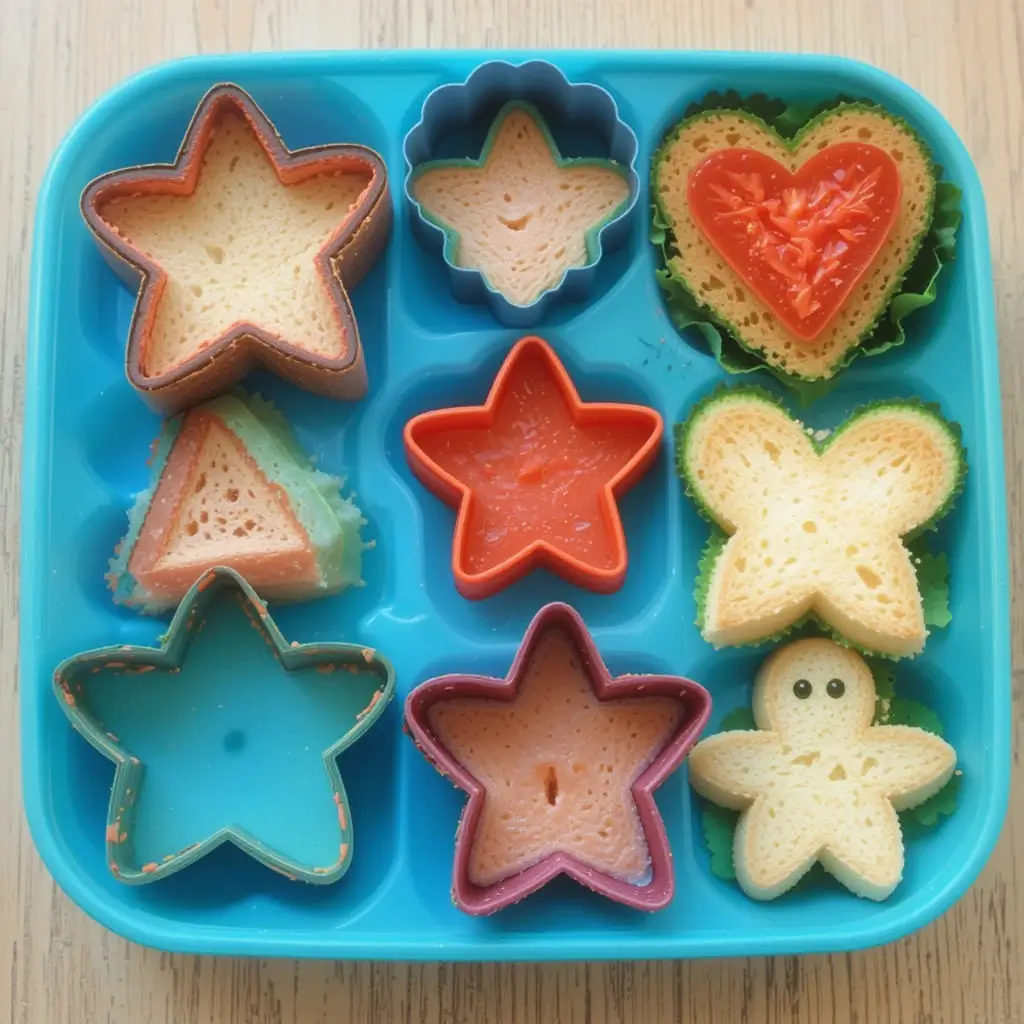
Use cookie cutters to turn sandwiches into stars, hearts, or animal shapes. Let kids press the cutters themselves. This builds hand strength and adds fun to their lunchbox. It also introduces them to food presentation and creativity, making meals more enjoyable and visually stimulating for picky eaters.
12. DIY Herb Garden in the Kitchen
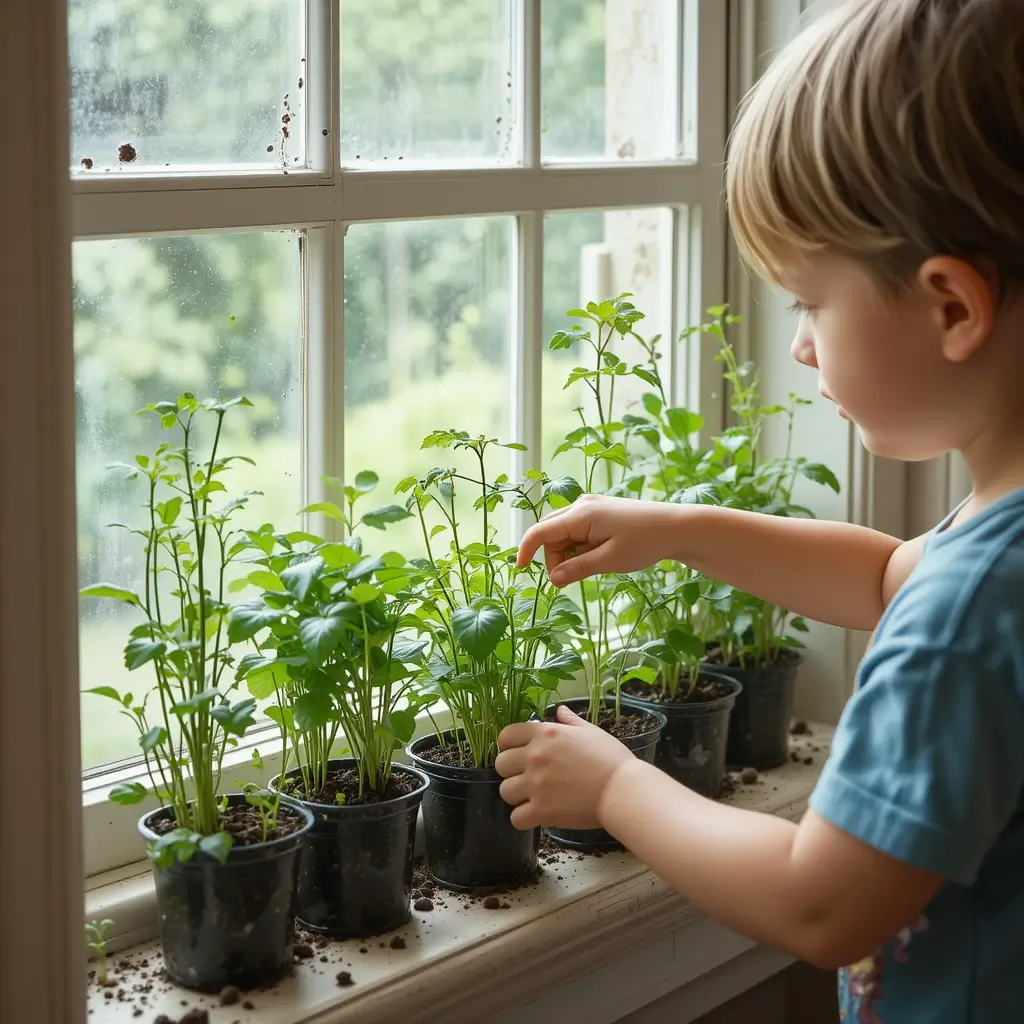
Set up a small windowsill herb garden with your kids. Let them water, touch, and eventually harvest the herbs. This connects them to the source of their food and introduces basic botany. Using fresh herbs they’ve grown in meals makes them feel proud and invested in what they eat.
13. Count and Measure Ingredients
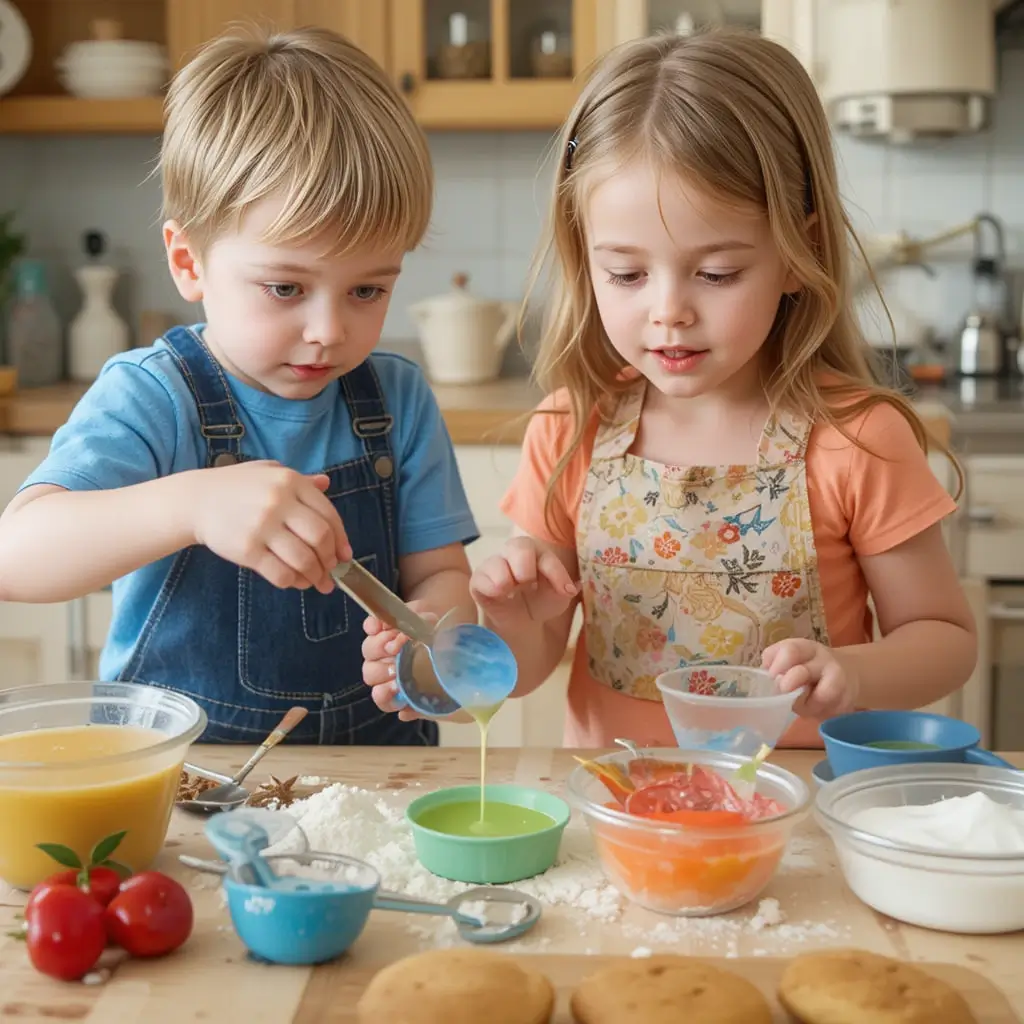
Let your child count scoops, measure flour, or pour liquids using measuring tools. This introduces math concepts like volume, fractions, and counting. It’s a great way to make abstract ideas tangible while they assist in making something delicious—like cookies, pancakes, or simple sauces—right alongside you.
14. Ice Cream in a Bag
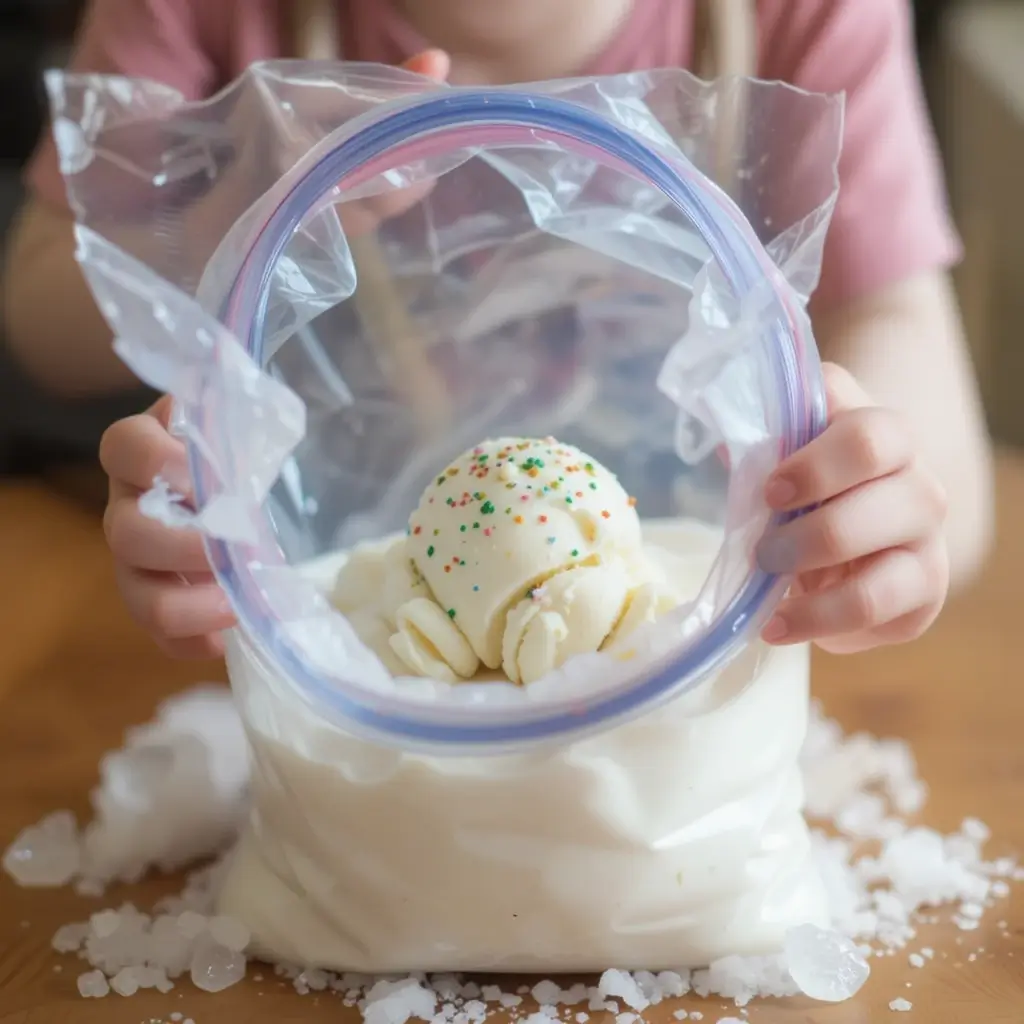
Teach your kids how to make ice cream by shaking cream, sugar, and vanilla in a ziplock bag surrounded by ice and salt. It’s a fascinating way to show how temperature changes matter while ending with a treat. Kids love the hands-on shaking and watching ingredients transform.
15. Decorate Your Own Cupcake

Bake plain cupcakes and set out various toppings like sprinkles, fruit, and frosting. Let your kids decorate their own creations. This builds creativity, hand-eye coordination, and presentation skills. Plus, they’ll enjoy eating something they personally made, which enhances their sense of achievement and involvement in the kitchen.
16. Explore Spices with Smell Jars
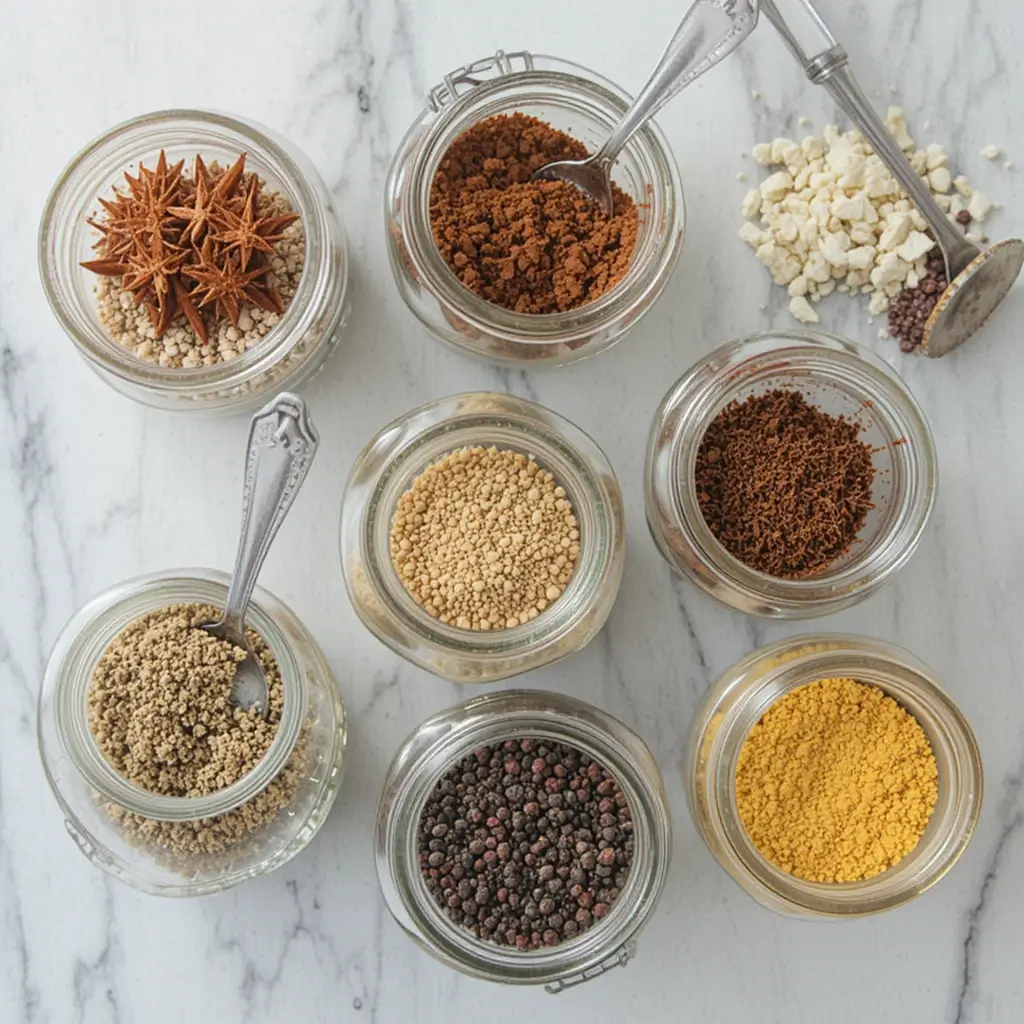
Fill small jars with familiar spices and let kids smell and guess each one. Talk about where they come from and how they’re used in food. This activity sharpens the sense of smell, boosts vocabulary, and introduces cultural awareness through culinary scents from around the world.
17. Make Pancake Art
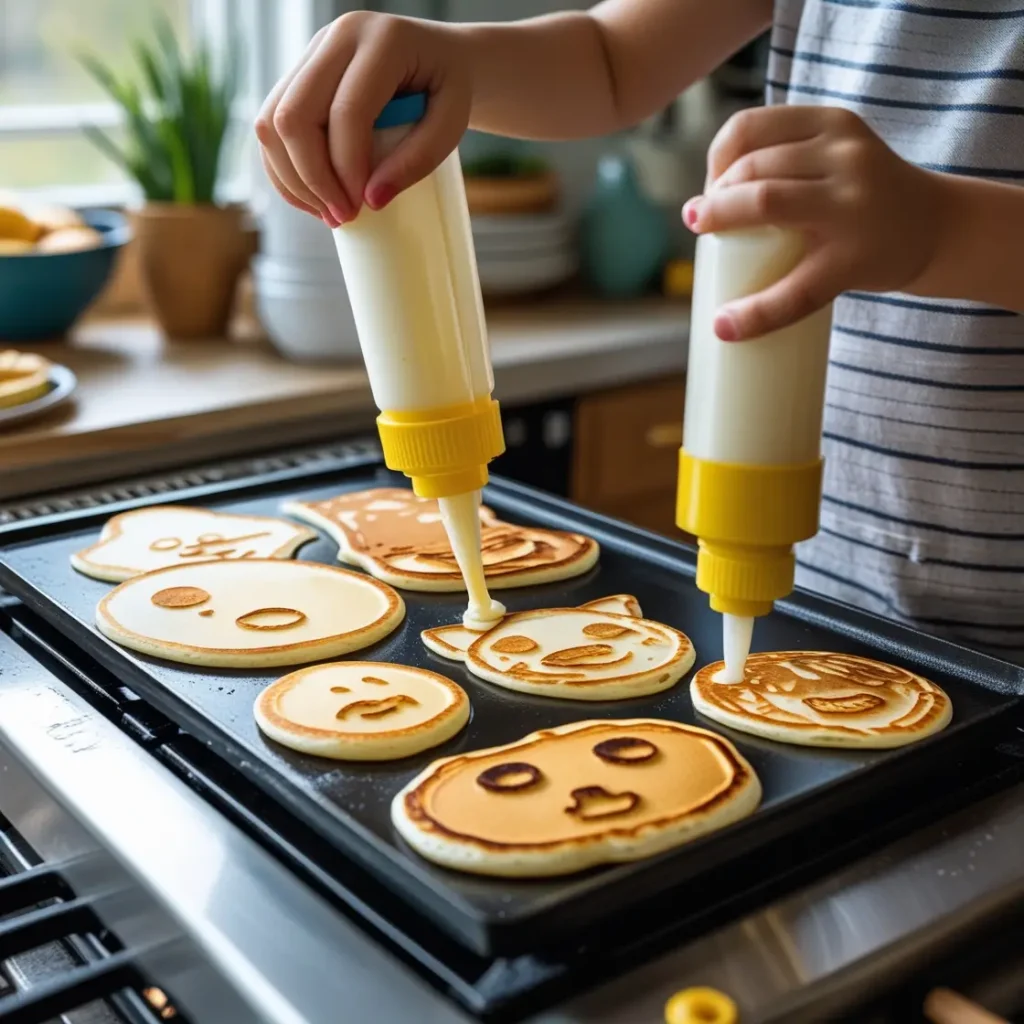
Use squeeze bottles to draw fun pancake shapes on the griddle. Let kids request designs or try squeezing themselves (with supervision). This introduces them to temperature safety, timing, and creativity. Eating a pancake shaped like their name or favorite character makes breakfast an exciting learning moment.
18. Egg Cracking Practice
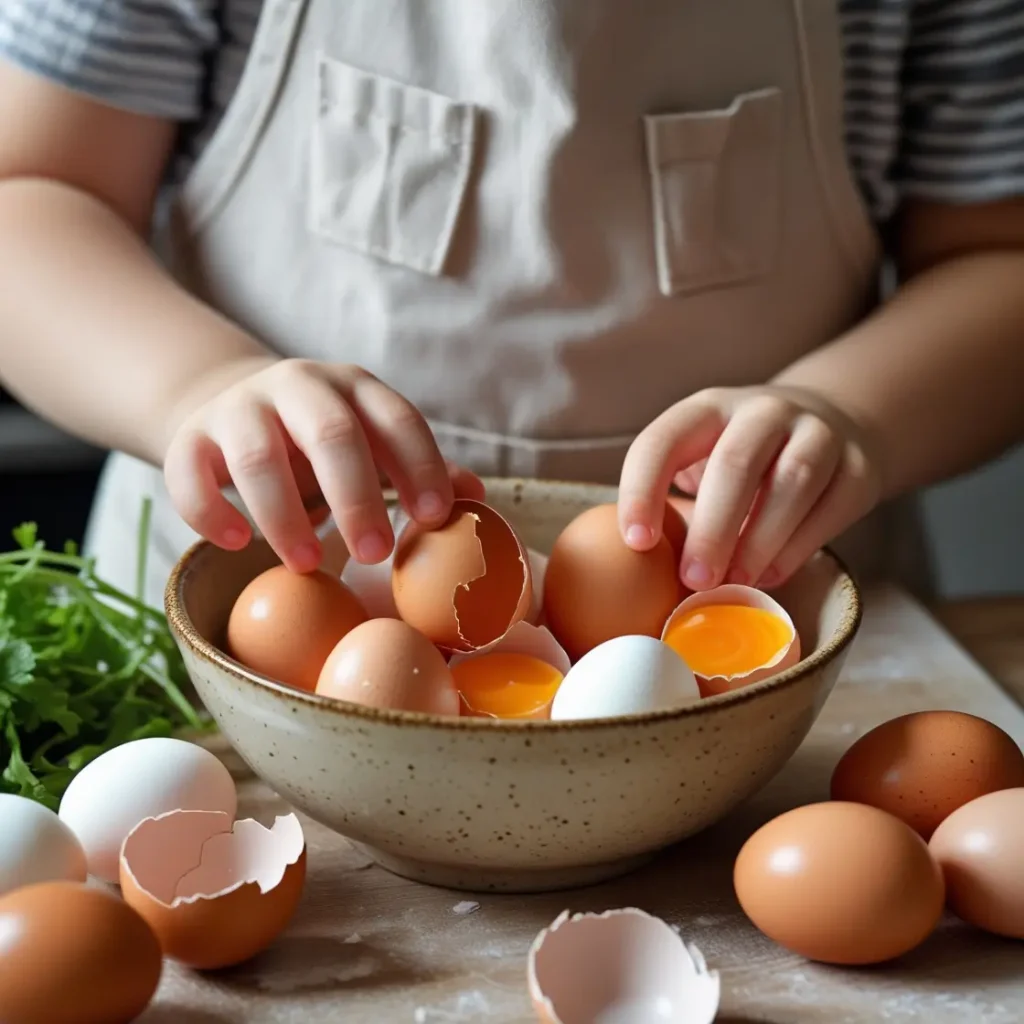
Give your kids a bowl and a few eggs to practice cracking. Start with boiled eggs if they’re very young. Cracking eggs teaches control, patience, and confidence with real ingredients. It’s a foundational cooking skill and a rite of passage that opens the door to baking and meal prep.
19. Explore Food from Other Cultures
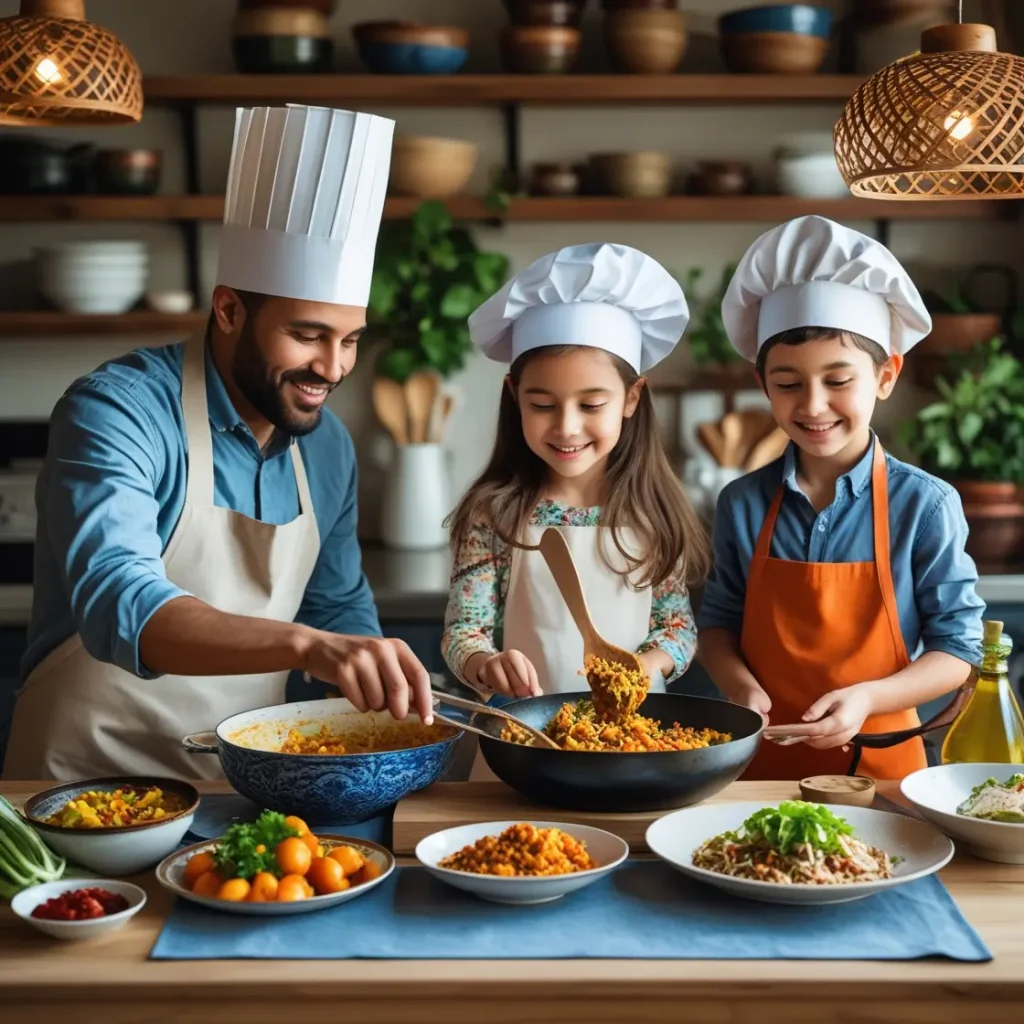
Choose a different country’s cuisine and let your child help cook a simple dish. Talk about its origin, ingredients, and flavors. This activity promotes cultural appreciation, expands the palate, and makes learning geography and history feel like a tasty journey around the world, right from your own kitchen.
20. Build a Breakfast Bar
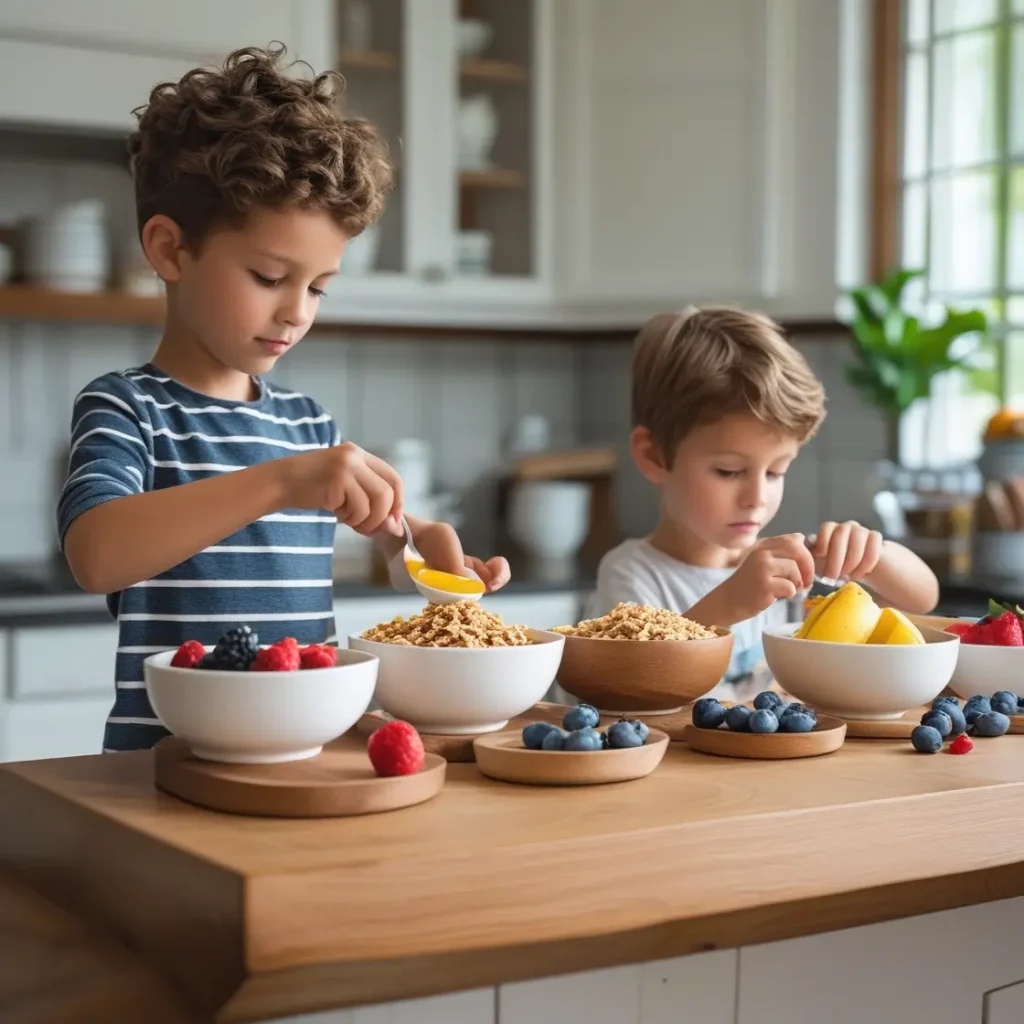
Set up a breakfast station with cereal, fruit, yogurt, and granola. Let kids assemble their bowls. This builds independence and encourages balanced eating habits. It’s also a stress-free way to start the day, with kids feeling empowered to make nutritious choices in a routine they helped create.
21. Make Homemade Butter
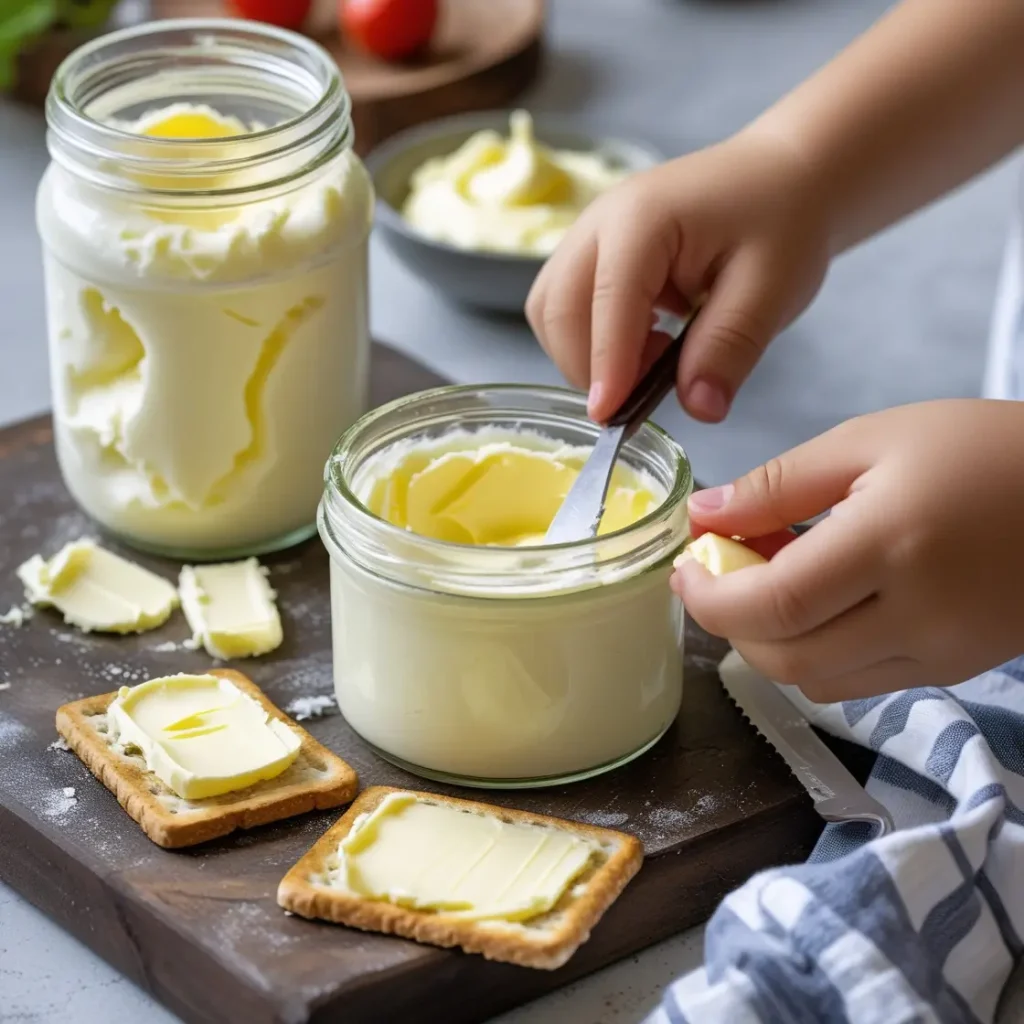
Pour heavy cream into a jar and have kids shake it until it turns into butter. This hands-on activity is a perfect example of a physical change in food. Plus, spreading butter they made on toast or crackers makes them feel like kitchen pros while learning a real-life process.
22. Food-Themed Story Time
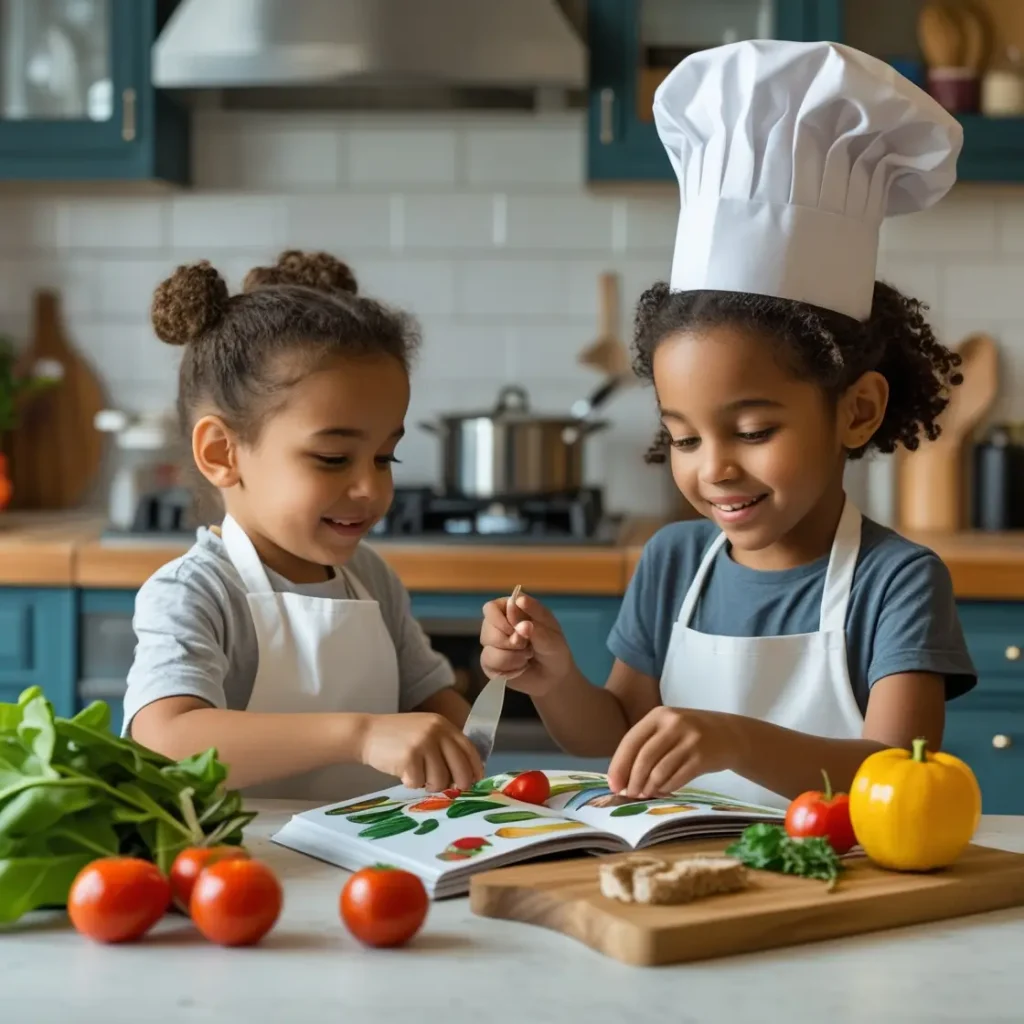
Pair reading with food exploration by choosing picture books about food and cooking. Follow up the story with a related kitchen activity. It connects language learning with real-life experiences, enhances comprehension, and helps younger kids associate reading with enjoyable, sensory-rich moments that stick in their memory.
23. Create a Kitchen Chore Chart

Make a colorful chore chart for kitchen tasks like wiping counters, setting the table, or organizing the pantry. Kids learn responsibility and time management while becoming part of the family cooking routine. Turn it into a game or reward system to keep motivation high and tasks enjoyable.
24. Assemble Snack Bento Boxes
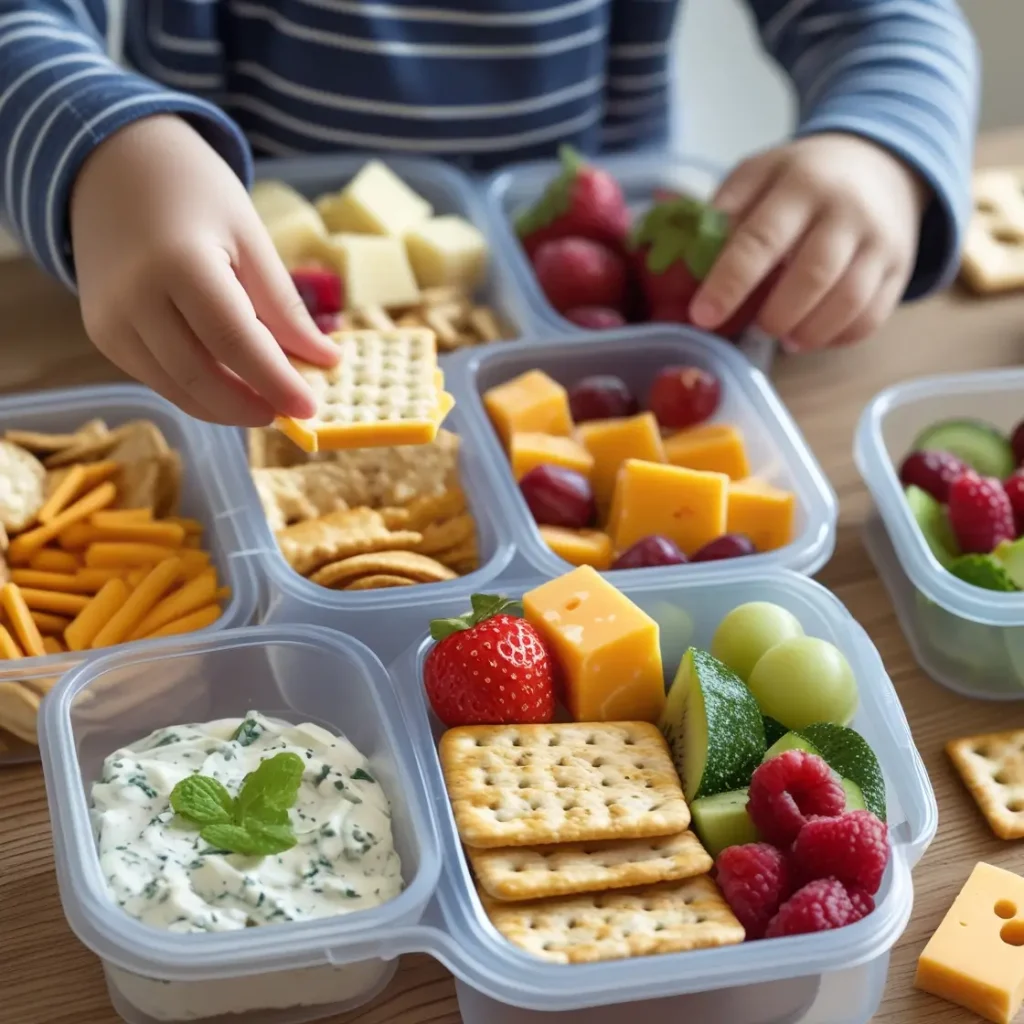
Give kids small compartments and various snack options—cheese cubes, fruits, crackers, and dips. Let them build their own snack boxes. This activity teaches balance, nutrition, and portion control while encouraging variety. It also makes snacking feel special and allows for daily creativity in their food choices.
25. Practice Safe Cutting with Kid Knives
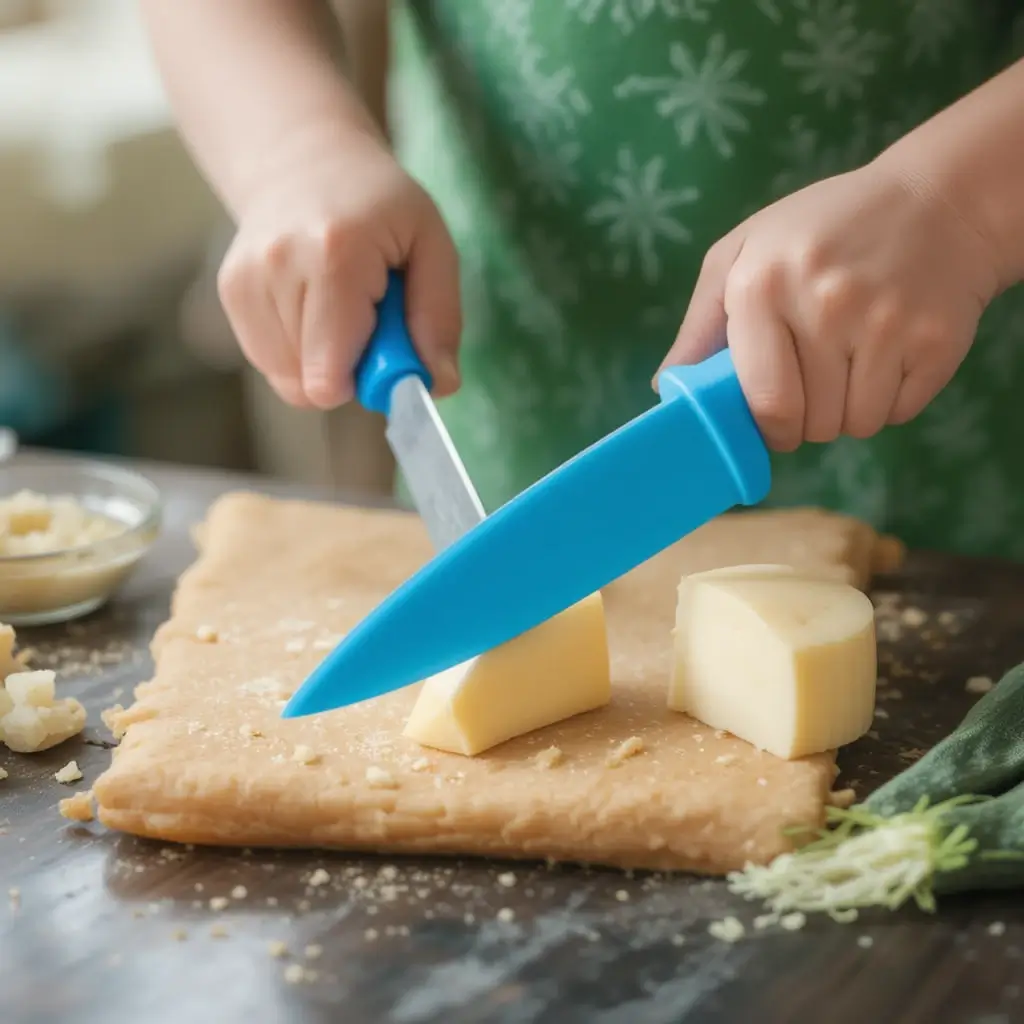
Introduce safe chopping skills using plastic or nylon knives on soft foods like bananas, cucumbers, or cheese. Supervise closely and demonstrate proper grip and safety rules. This early exposure to cutting builds confidence, respect for kitchen tools, and sets the foundation for more advanced cooking down the road.
Conclusion
With the right tools and a little imagination, your kitchen can become a joyful learning space for your kids. From mini cooking stations to simple science experiments with food, these ideas build confidence, curiosity, and life skills. Let your little chefs explore, create, and learn—one delicious activity at a time.

